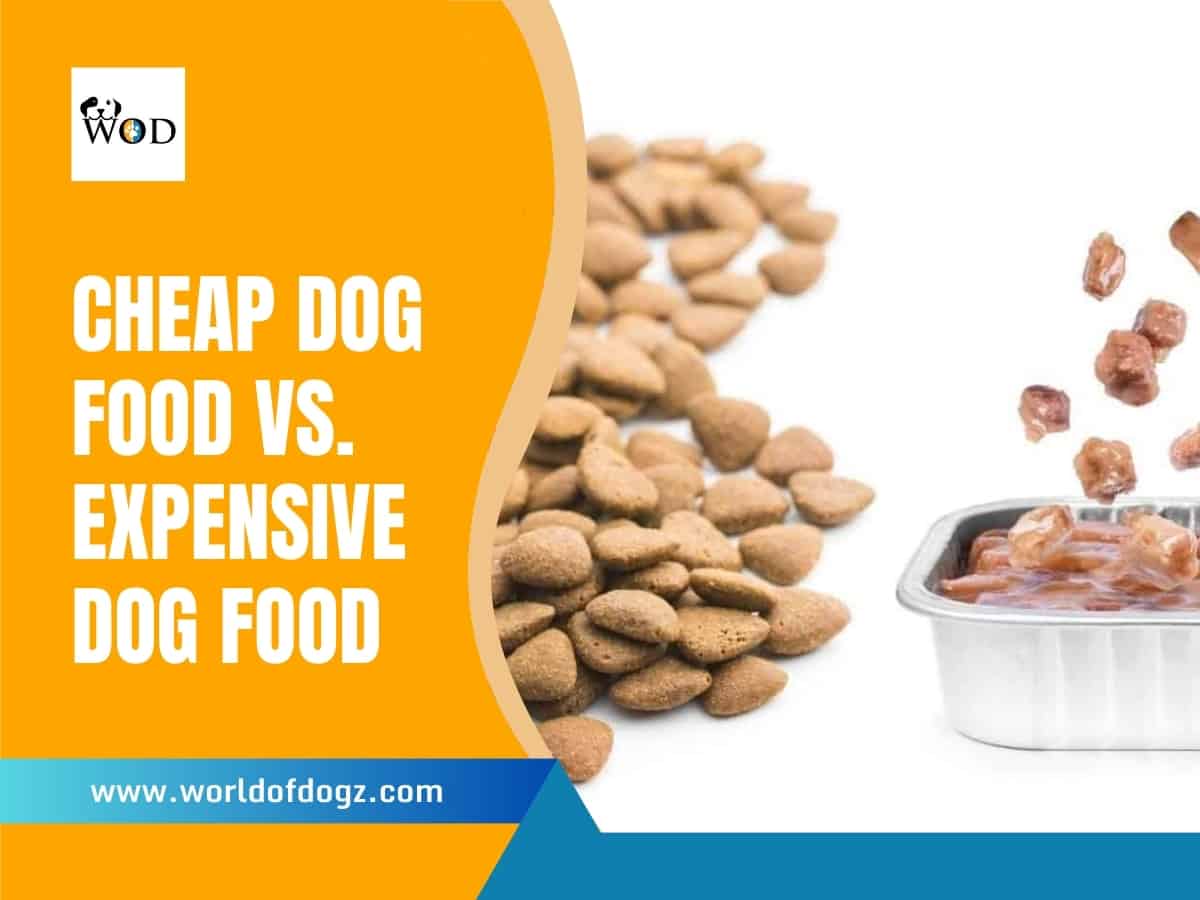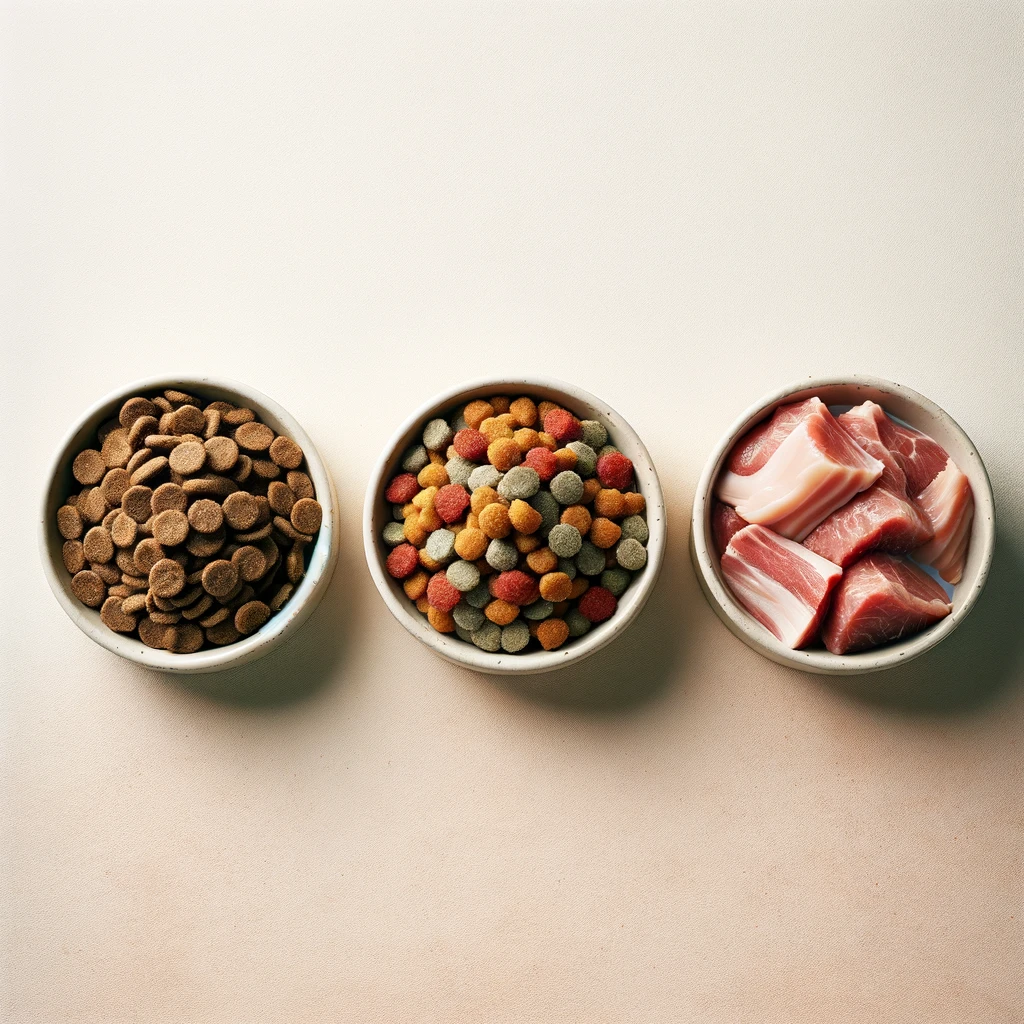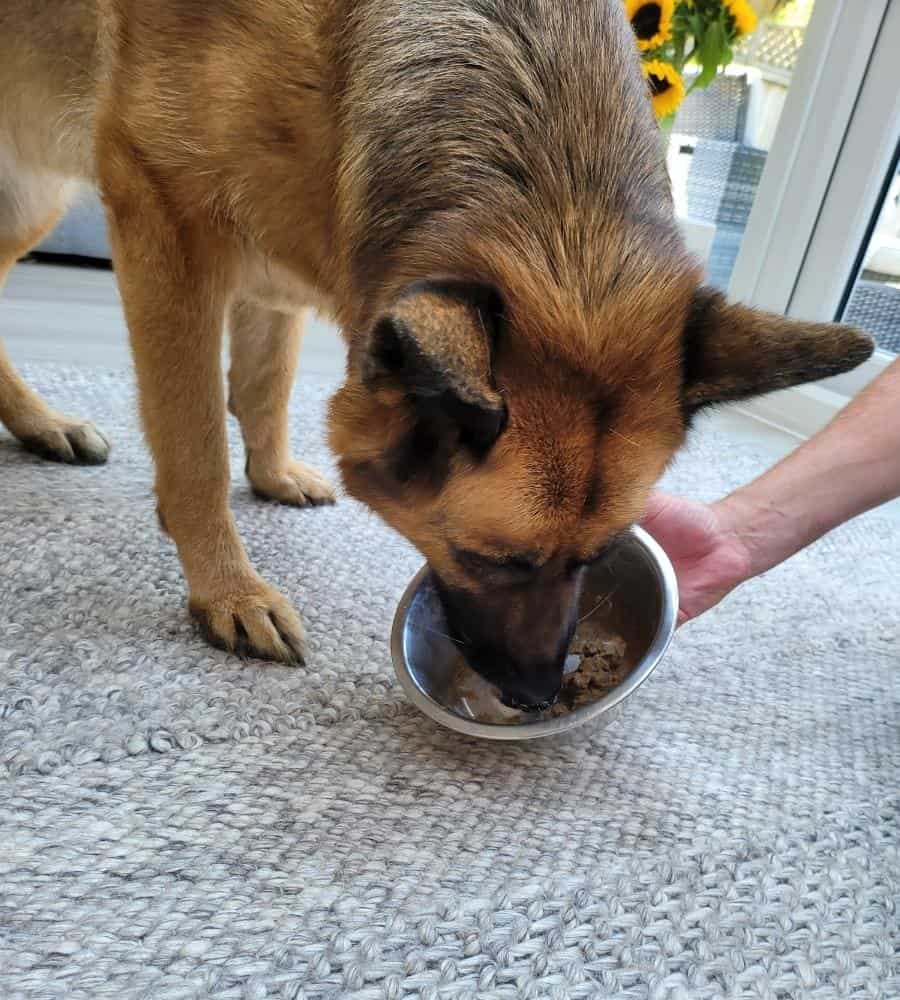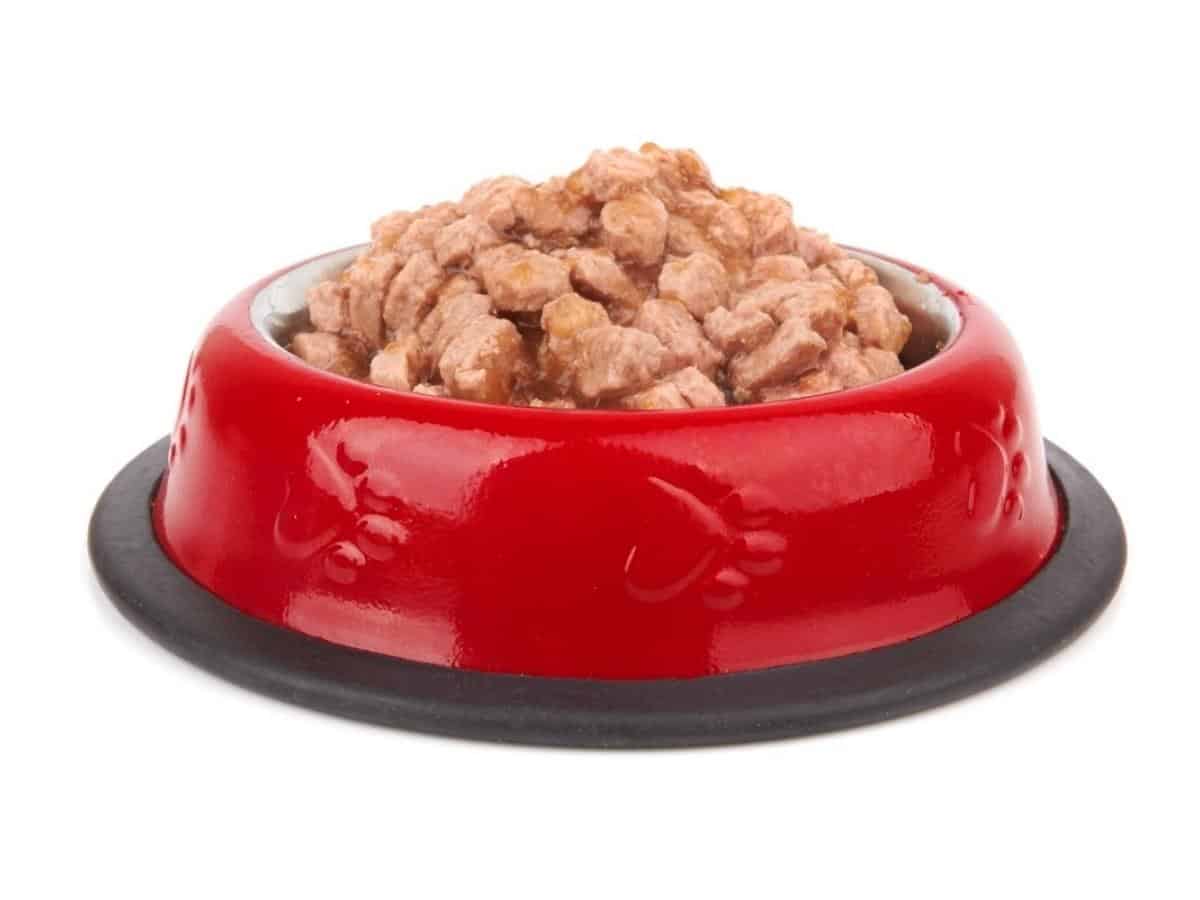When it comes to choosing between cheap and expensive dog food, you may be faced with a dilemma.
Cheap dog food is typically more affordable but may contain lower-quality ingredients that could impact a dog’s health. On the other hand, expensive dog food is often marketed as being made from higher-quality ingredients and offering better nutrition, but it comes with a higher price tag.
The debate between cheap and expensive dog food revolves around the trade-off between cost and quality.
- While cheap dog food may seem cost-effective, you must consider the potential long-term effects on a dog’s health and well-being.
- On the other hand, expensive dog food may offer better nutritional value and higher-quality ingredients, but it may not always be necessary for every dog.
In the following article, we will explore the key differences between cheap and expensive dog food, as well as factors to consider when making the best choice for your furry companion.

Difference Between Cheap and Expensive Dog Food
A visit to the dog food section of the retail store in your neighborhood or a pet store/boutique presents various options at different prices.
You’d find dry, canned, fresh, and even raw-meat-based foods, various brands, grades, and prices.
A regular bag of kibble costs about $10 to $25. Some premium brands of the same quantity cost two to three times more.
Since feeding is an essential component of caring for your furry friend, choosing the best and healthiest food for your pet often raises the question of price point.
It begs the question, what makes one food product different from the other? Why is one dog food brand more expensive than another of similar composition? And is it really worth the price to spend more on feeding?
The table below summarizes the factors that differentiate costly and cheap dog foods.
| Factor | Cheap | Expensive |
|---|---|---|
| Type of food | Dry, Wet | Fresh, Raw |
| Ingredients | More Grains, grain by-products, meat by-products, and additives. | Meat, Whole vegetables, Additives. |
| Production process | Disputable | Disputable |
It is important to state that, as with many other products, “expensive” doesn’t exactly translate into “healthy,” and also, “cheap” doesn’t mean “bad.” These factors are not in isolation but interwoven into each other.
Let’s break down this interplay and find out what makes one different from the other.
Type of Food

There are several food types on the market for your canine companion. Yet, when comparing the costs of different dog food types, all of these commercially available options can be classified into four main groups:
- Dry foods such as extruded food products are called kibble. Cold-pressed also falls into this category.
- Wet foods that come in cans, pouches, or tubs.
- Fresh foods such as cooked fresh or frozen food, whether homemade or purchased.
- Raw food diets, either frozen or freeze-dried.
Generally, the first two categories cost way less than the last two. However, premium brands of dry and wet foods available at pet stores and boutiques are more expensive than the regular ones in retail and mass markets.
Related: Kibble vs. Homemade Dog Food (Which is Better?)
Still, these high-quality foods are cheaper when compared with fresh or raw foods. Although not recommended due to health concerns for the pet, owner, and general public, raw diets are the most expensive dog foods.
If you follow my blog, you’ll know I’m the proud owner of a gorgeous German Shepherd named Willow. If you want to know more about the type of food I feed her and why, you can check out this article, Best Diet for German Shepherds.

Ingredients Used
Another critical difference between cheap and expensive dog food is the ingredients used in manufacturing them. Premium quality foods tend to be more expensive than lower quality foods because of the quality of their ingredients.
Here are some of the ingredients used in making dog foods:
- Red meat
- Poultry
- Fish
- Meat by-products
- Legumes
- Grains
- Vegetables
- Fruits
- Fats
- Vitamins and minerals
You must know your dog’s nutritional needs when considering cheap or expensive dog food.
Generally, low-priced foods contain more grains, grain by-products, and meat by-products.
For higher quality foods that might be more expensive, you’d find they have more real meat, whole vegetables, and low quantities of grains and by-products.
Unsurprisingly, some may even contain exotic meat and (or) be packed with more vitamins and minerals.
In addition to this, some food products contain organic ingredients. The percentage of organic ingredients in dog food also contributes to the cost. Foods with a higher rate of organic ingredients are also highly-priced.
Manufacturing Process
Although the quality and quantity of ingredients determine, to a large extent, the cost of dog foods, there are other contributors.
These are factors involved in the production process from lab to shelf that play vital roles in determining whether a food brand is highly-priced.
They include:
- The brand
- Formula Research and Development
- Quality and Expertise of Staff
- Food trials following AAFCO guidelines
- Quality Control and Assurance
- Cost of production
- Quantity produced and sold.
- Advertising and marketing
Dog food from companies that have been around for over two decades costs less than food from their newer counterparts.
These more well-known companies produce large quantities and ranges of dog food because they can procure bulk ingredients.
Also, they have their own production plants and quality personnel working on researching and developing recipes and can formulate quality canine nutrition. They have reasonable quality control and can afford to conduct food trials.
Some newly established companies might be unable to afford the costs these factors incur, especially if they don’t have their own facilities. For these reasons, they may spend more on advertising and marketing.
Rather than food trials, they may opt for nutritional profiles to meet the Association of American Feed Control Officials (AAFCO) requirements.
Foods from these newer brands, although termed “holistic,” “human grade,” or “natural,” may lack quality control during manufacturing.
The name of the brand and its existence largely determine how much its food products would be priced.
Still, this doesn’t mean there aren’t newer brands that offer quality food at low cost. Again, high price points can also mean high-quality ingredients and good quality control during production.

Does Higher Cost Mean Better Nutrition?
This question is a widespread concern for dog owners, animal nutritionists, and veterinarians.
Advertising can be misleading, with all the spiffy presentations and powerful marketing. It makes one wonder if a higher price guarantees better health for the dog.
A high price point doesn’t necessarily mean the best choice or the labels’ buzzwords.
Some highly priced foods are for supplemental feeding. Some are labeled “intermittent” or “complementary.” Some dogs become sick after consuming expensive foods, and some do well on cheaper options.
When buying food for your furry friend, you should consider the manufacturer’s knowledge and quality control.
Again, do you care about where it is being produced? Do you want to know if food trials are conducted and how? Choosing the right option for your pet also depends on your priorities.
Also, before buying a product, do well to read the nutritional composition on the back of the label. You will find information on the adequacy of the food. The best choice for your canine companion is a complete and balanced product.

FAQs
What are some tips for finding high-quality dog food on a budget?
To find quality dog food on a budget, compare ingredient lists, utilize coupons, buy in bulk, subscribe to brand newsletters for deals, consider store brands, and check for manufacturer discounts.
Should you feed your dog an organic diet?
While most pet store owners argue that organic diets are better for your dog’s health, experts agree that going organic isn’t all that necessary.
The improved health noticed after switching to an organic diet may, after all, be a marketing placebo effect. Spending a lot on organic food doesn’t exactly translate to it being a need and of good value to your dog. All you need is a diet with good quality ingredients, organic or not.
Does the price of dog food correlate with the likelihood of food allergies or sensitivities?
Expensive dog food may use higher quality ingredients that are less likely to trigger allergies, but it’s not a guarantee. Always check ingredient labels for common allergens.
Are raw food diets good for your pet?
Raw food diets can be beneficial for some pets, providing natural nutrients. However, they also pose risks like bacterial contamination and nutritional imbalances. Consult a vet before switching.
How often should I evaluate and potentially change my dog’s diet?
You should evaluate your dog’s diet during regular vet visits or at least annually. Adjustments may be needed due to changes in age, health, activity level, or if you notice changes in weight, coat, or digestion.
Final Thoughts
Feeding a dog can be expensive, especially when you’re intentional about providing quality food to your pet. One food product may be more costly than the other due to any of the following:
- Ingredients
- Type of food
- The manufacturing process
However, a high price point doesn’t guarantee better nutrition. Go for a healthy diet that gives you good value for your money.
Unless your vet recommends it for health reasons, expensive foods may be all bark and no bite. However, if your lifestyle affords it, why not? That’s my philosophy, anyway.





